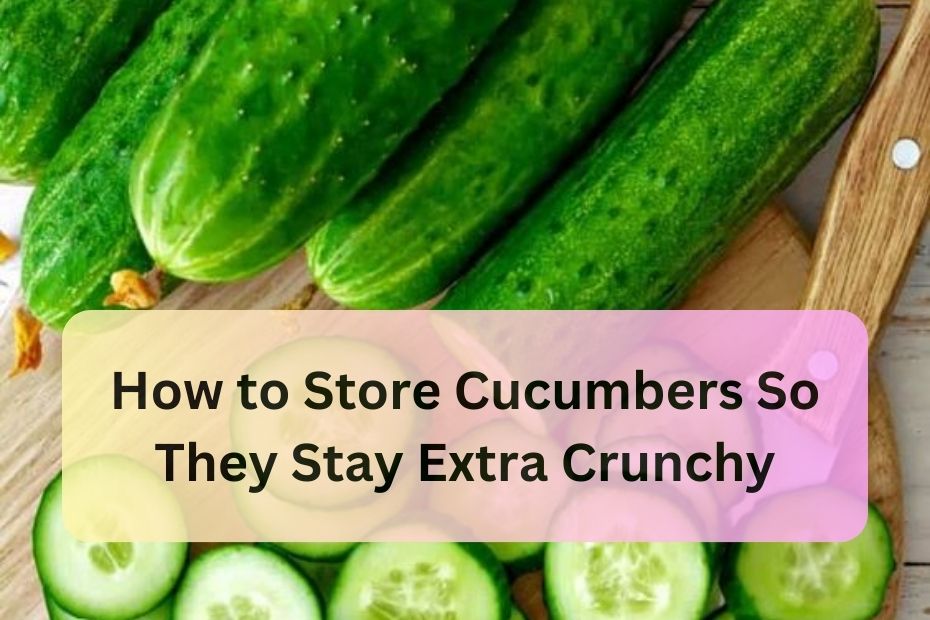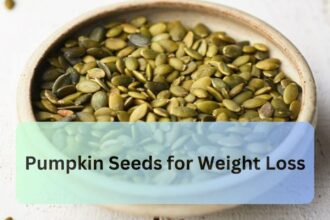How to Store Cucumbers So They Stay Extra Crunchy
Cucumbers are a refreshing and versatile vegetable that adds crunch and flavor to salads, sandwiches, and snacks. However, improper storage can quickly lead to limp, soggy cucumbers that lose their appeal. If you’re tired of mushy cucumbers and want to keep them extra crunchy, you’ve come to the right place. In this article, we’ll explore the best methods for storing cucumbers to maintain their crispness and flavor for longer.
Introduction
Importance of storing cucumbers properly: Proper storage is essential for preserving the freshness and crunchiness of cucumbers. Whether you grow them in your garden or purchase them from the grocery store, knowing how to store cucumbers correctly can extend their shelf life and enhance their texture.
Teaser for the upcoming storage tips: In the following sections, we’ll discuss everything you need to know about selecting, preparing, and storing cucumbers to ensure they stay extra crunchy and delicious.
Selecting Fresh Cucumbers
Choosing the right cucumbers for storage: When selecting cucumbers, look for firm specimens with smooth, unblemished skin. Avoid cucumbers that are soft, wrinkled, or have visible signs of decay.
Signs of freshness to look for when shopping: Fresh cucumbers should feel firm to the touch and have a vibrant green color. Inspect the stem end for any signs of mold or mushiness, as this can indicate spoilage.
Preparing Cucumbers for Storage
Washing and drying cucumbers: Before storing cucumbers, rinse them thoroughly under cold water to remove any dirt or debris. Pat them dry with a clean kitchen towel or paper towels to remove excess moisture, which can accelerate spoilage.
Removing excess moisture to prevent spoilage: Excess moisture is the enemy of crunchy cucumbers. To prevent them from becoming soggy, ensure that they are completely dry before storing them in the refrigerator.
Wrapping Cucumbers for Storage
Using paper towels or cloth to wrap cucumbers: To maintain their crispness, wrap individual cucumbers in paper towels or a clean cloth before placing them in a storage container. This helps absorb excess moisture and prevents the cucumbers from becoming limp.
Tips for maintaining crispness during storage: Replace the paper towels or cloth every few days to ensure that they remain dry and effective at absorbing moisture. This simple step can help prolong the shelf life of your cucumbers and keep them crunchy for longer.
Storage Containers and Conditions
Ideal storage containers for cucumbers: Choose a breathable storage container for cucumbers, such as a perforated plastic bag or a vegetable crisper drawer in the refrigerator. Avoid sealing cucumbers in airtight containers, as this can trap moisture and lead to spoilage.
Temperature and humidity considerations: Cucumbers prefer cool, humid conditions for optimal storage. Store them in the vegetable crisper drawer of your refrigerator, where the temperature is slightly lower and the humidity is higher than the rest of the fridge.
Storing Cucumbers in the Refrigerator
Proper placement in the fridge to maximize freshness: Place wrapped cucumbers in the vegetable crisper drawer, where they will stay cool and protected from ethylene-producing fruits and vegetables that can accelerate ripening and spoilage.
Avoiding ethylene-producing fruits and vegetables: Keep cucumbers away from ethylene-producing fruits such as bananas, apples, and tomatoes, as exposure to ethylene can cause them to ripen and spoil more quickly.
Alternative Storage Methods
Using a vegetable crisper or drawer: If you don’t have a perforated plastic bag, store cucumbers in the vegetable crisper drawer of your refrigerator. This provides a cool, humid environment that helps maintain their crispness.
Storing cucumbers in a perforated plastic bag: Alternatively, you can store cucumbers in a perforated plastic bag to allow for airflow while protecting them from excess moisture. Simply poke a few small holes in a plastic bag and place the cucumbers inside before refrigerating.
Keeping Cucumbers Fresh for Longer
Rotation and consumption tips to prevent waste: To prevent cucumbers from going to waste, rotate them regularly and consume them within a week of purchase. Incorporate them into salads, sandwiches, or snacks to enjoy their crisp texture and refreshing flavor.
Rejuvenating limp cucumbers: If your cucumbers start to lose their crunchiness, you can revive them by soaking them in ice water for 30 minutes to an hour. This will help rehydrate the cucumbers and restore their crispness.
Conclusion
In conclusion, knowing how to store cucumbers properly is key to maintaining their crispness and flavor for longer. By following these simple tips for selecting, preparing, and storing cucumbers, you can enjoy crunchy and delicious cucumbers in your favorite dishes. So, the next time you bring home a batch of fresh cucumbers, use these storage methods to keep them extra crunchy and satisfying.
FAQs:
1. How long do cucumbers last in the refrigerator? When stored properly, cucumbers can last up to one week in the refrigerator. However, it’s best to consume them within a few days for optimal freshness and flavor.
2. Can I freeze cucumbers to prolong their shelf life? While cucumbers can be frozen, they will become soft and watery when thawed, making them unsuitable for fresh consumption. Frozen cucumbers are best used in cooked dishes such as soups and stews.
3. Should I store cucumbers at room temperature or in the refrigerator? Cucumbers should be stored in the refrigerator to maintain their crispness and prevent spoilage. Room temperature storage can cause cucumbers to wilt and become mushy more quickly.
4. Can I store cucumbers with other fruits and vegetables? It’s best to store cucumbers away from ethylene-producing fruits and vegetables, as exposure to ethylene can cause them to ripen and spoil more quickly. Keep cucumbers separate from bananas, apples, and tomatoes in the refrigerator.
5. How can I tell if a cucumber has gone bad? Signs of spoilage in cucumbers include softness, wrinkling, mold growth, and a slimy texture. If you notice any of these signs, it’s best to discard the cucumber to prevent foodborne illness.
| Home | Click Here |
| Health And Food | Click Here |





